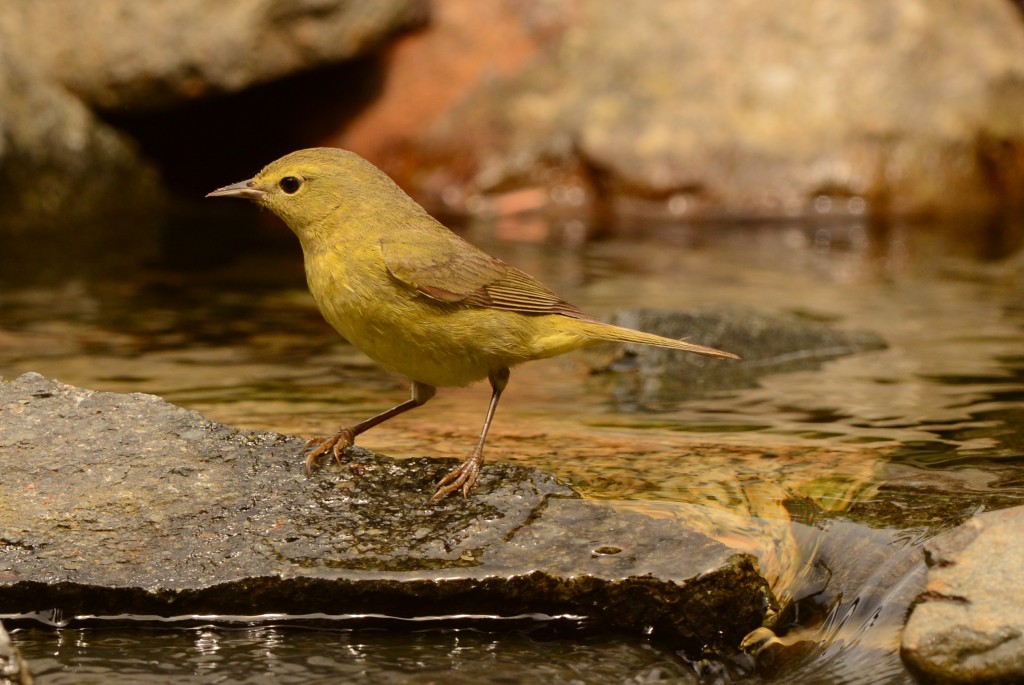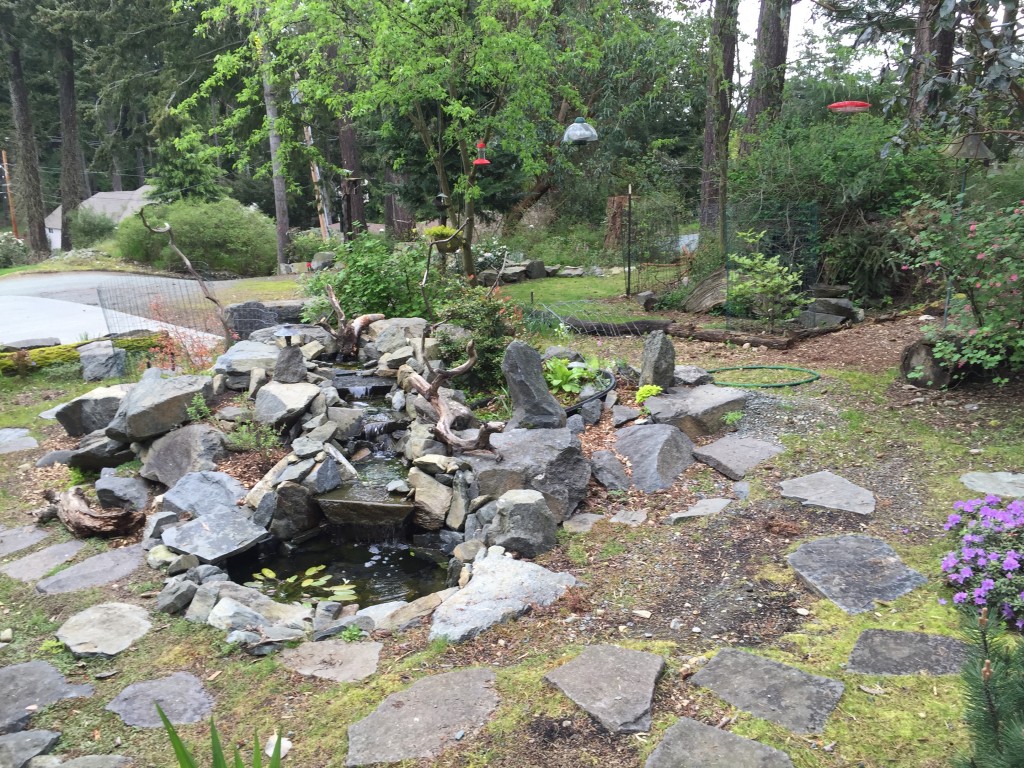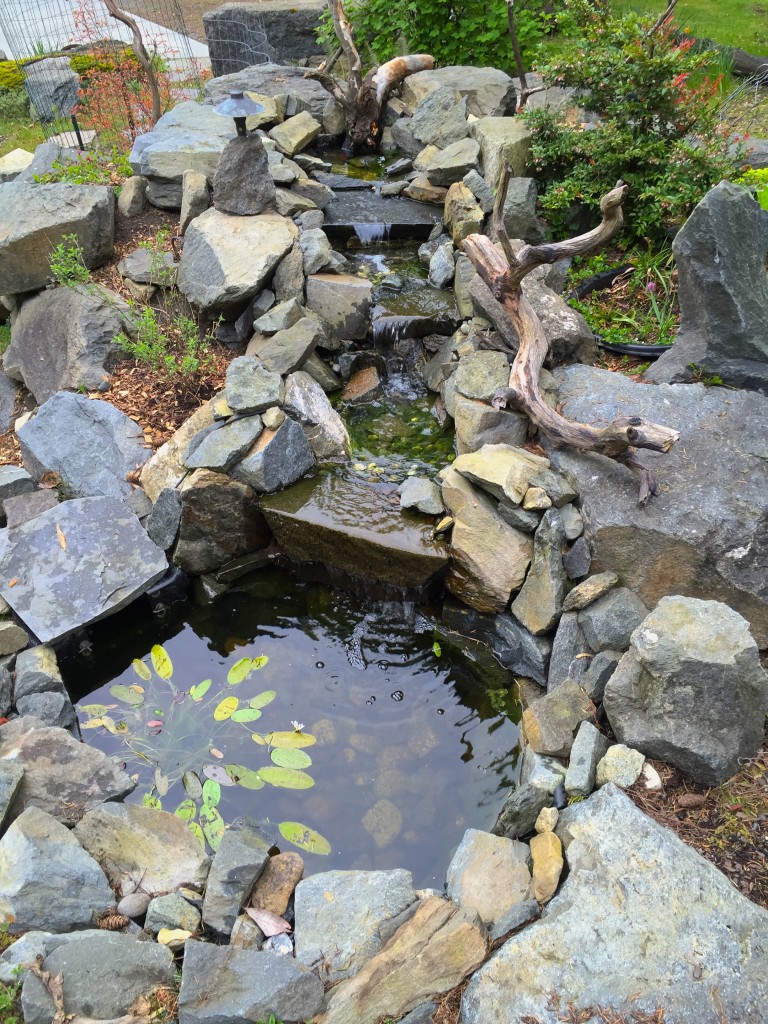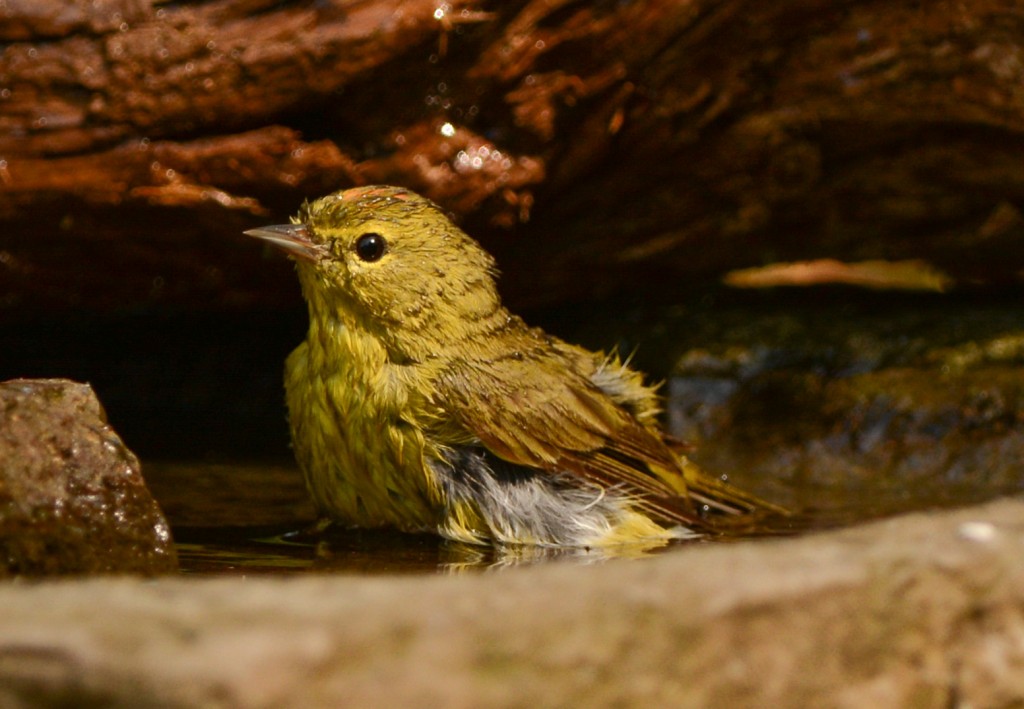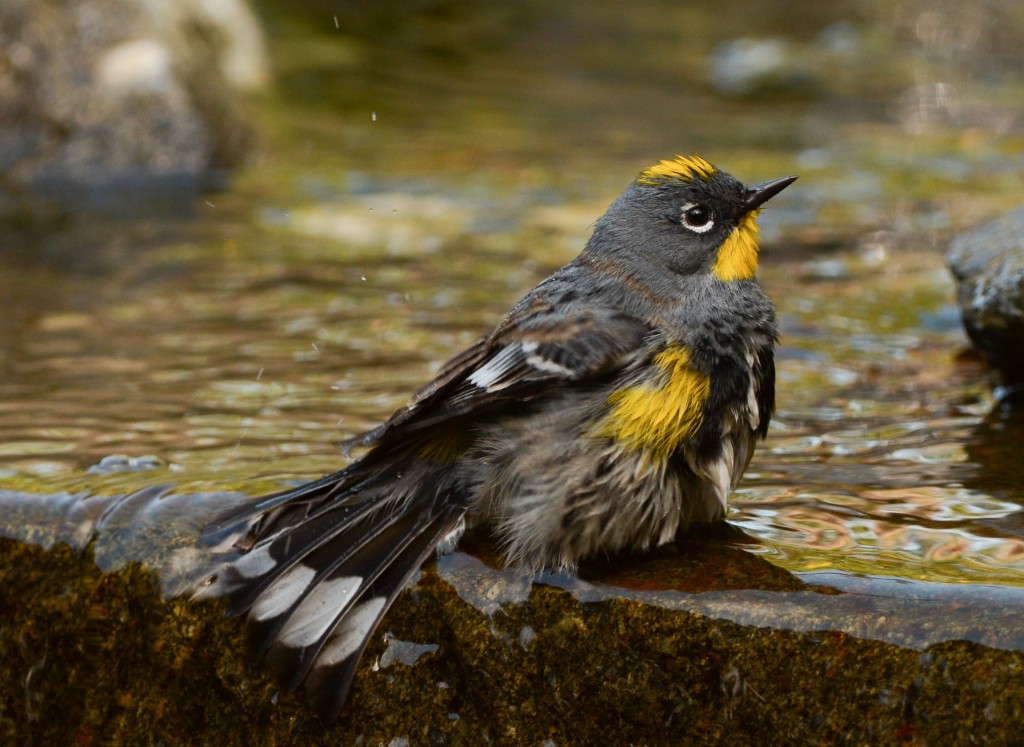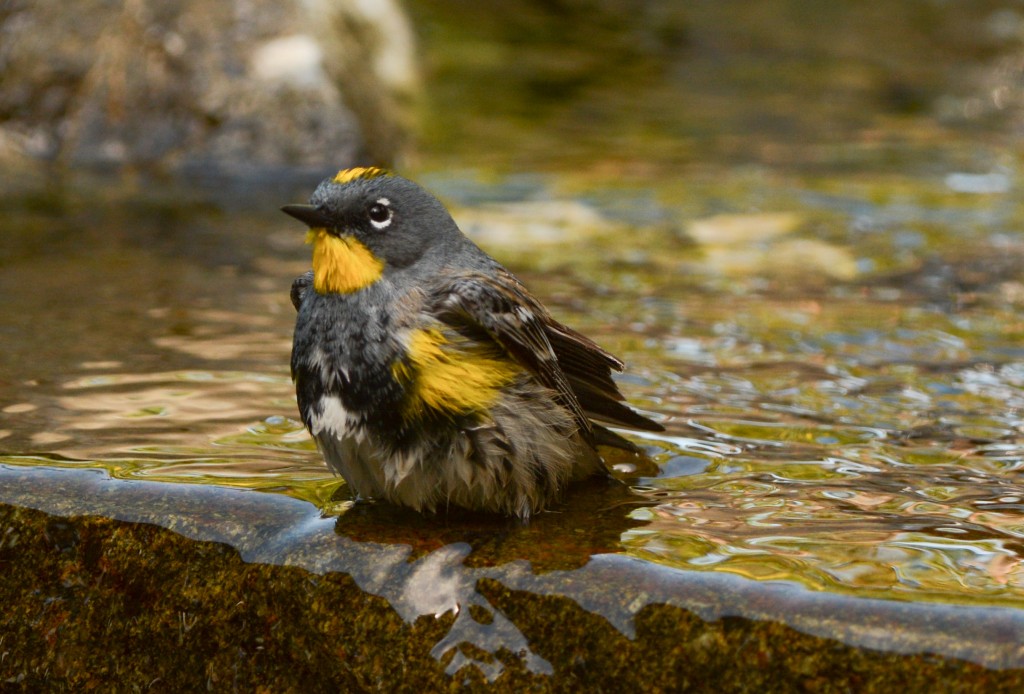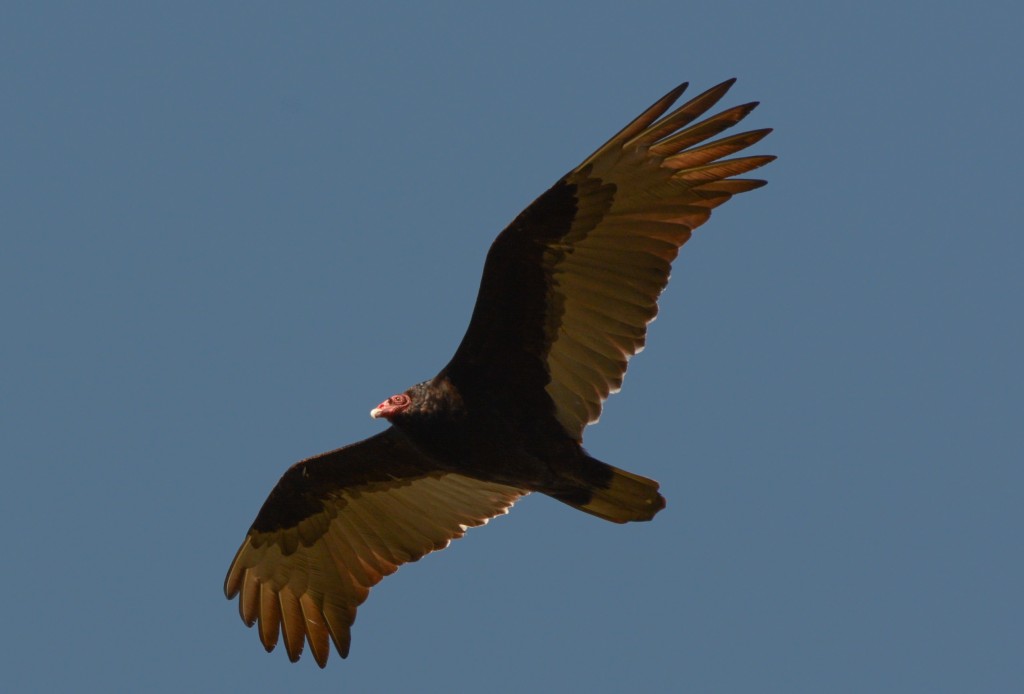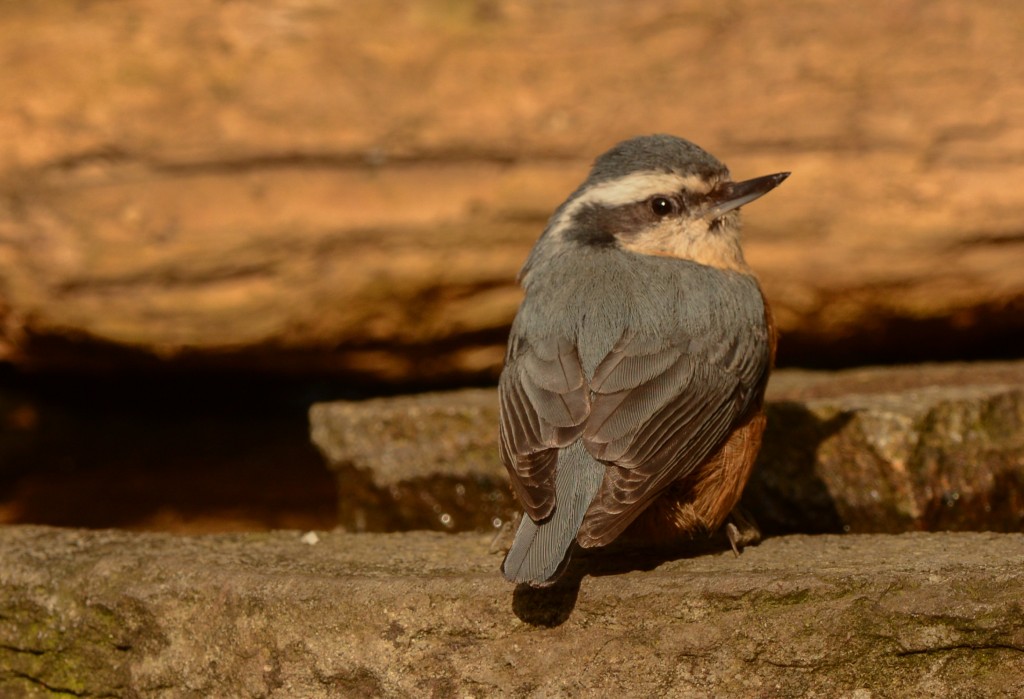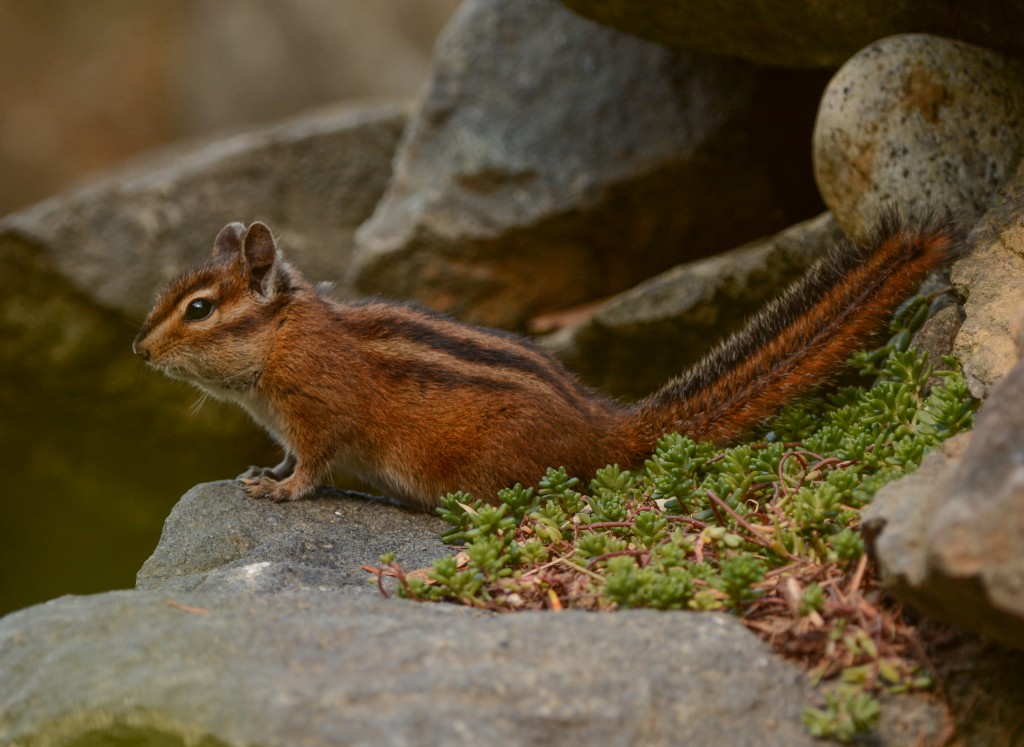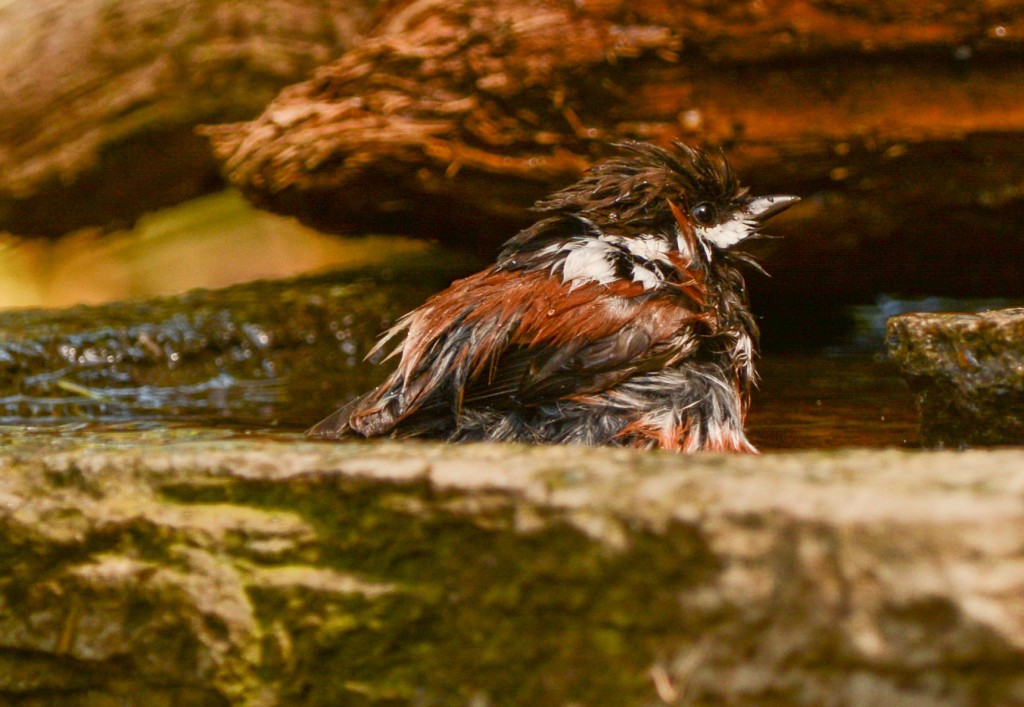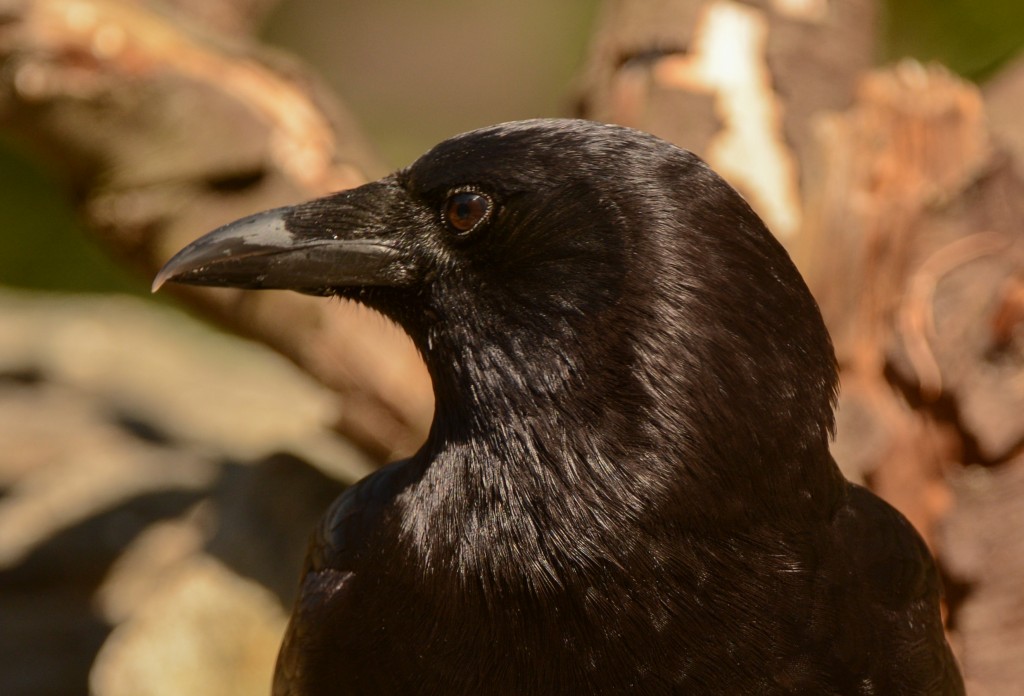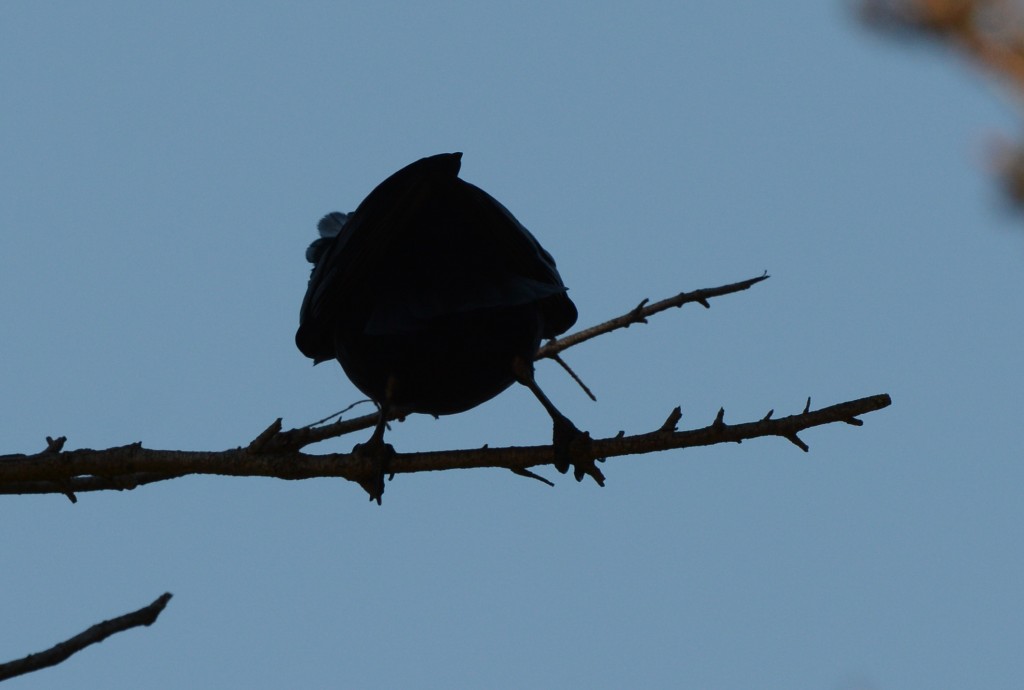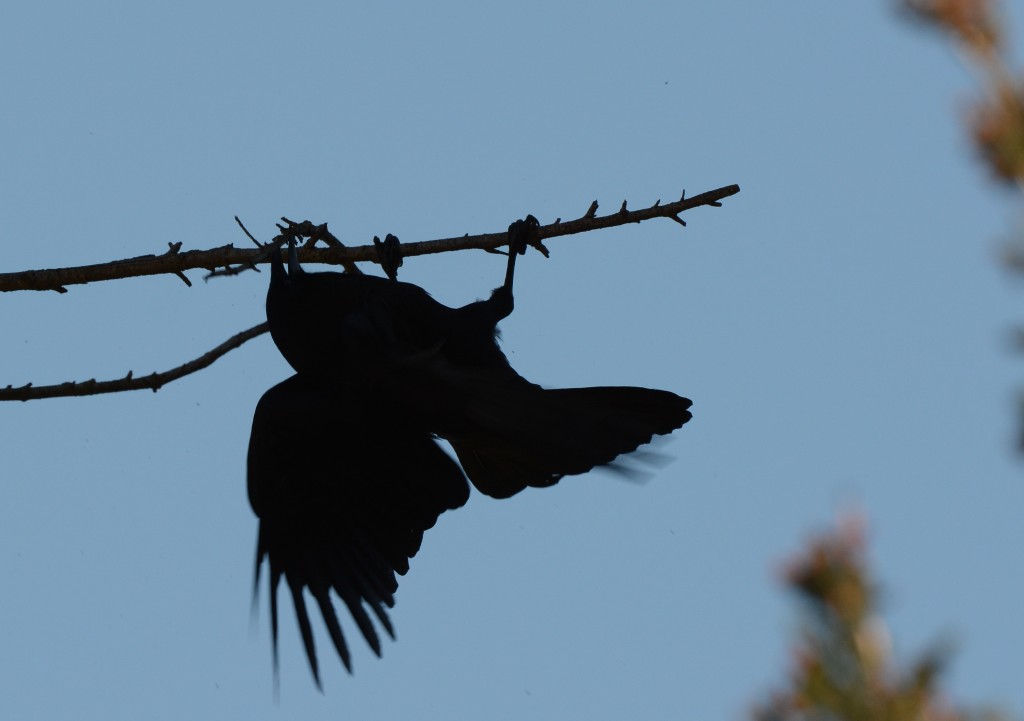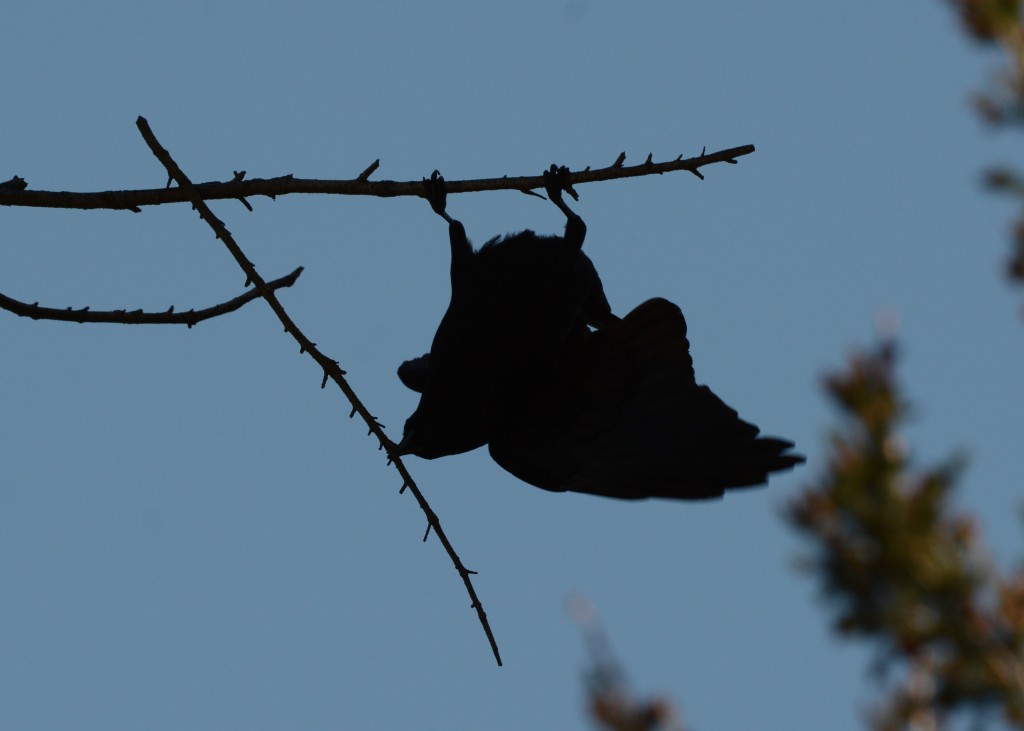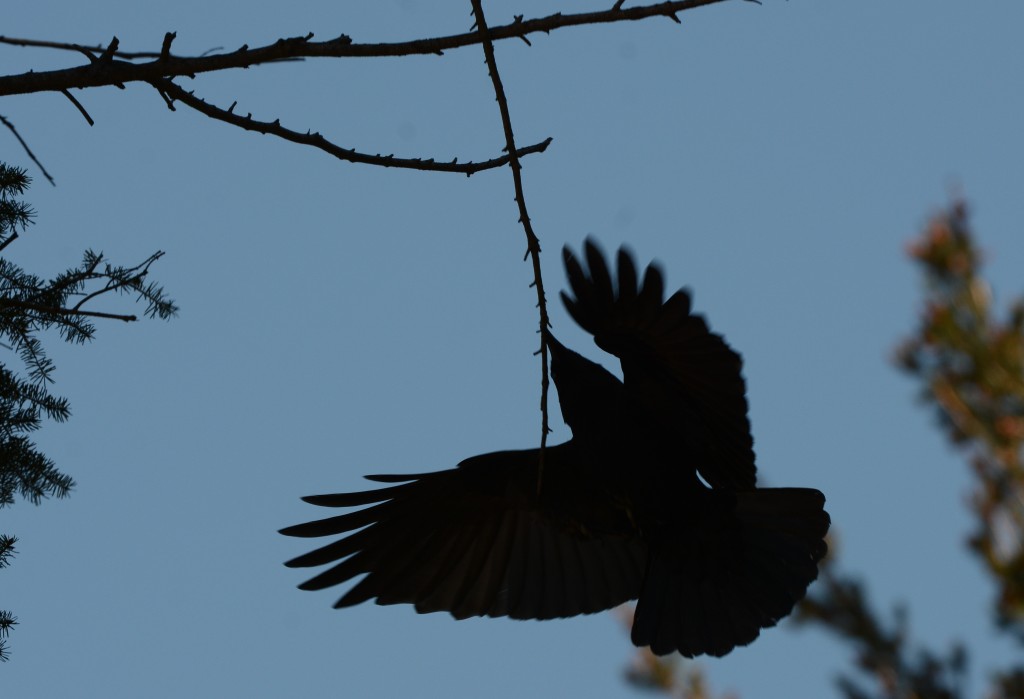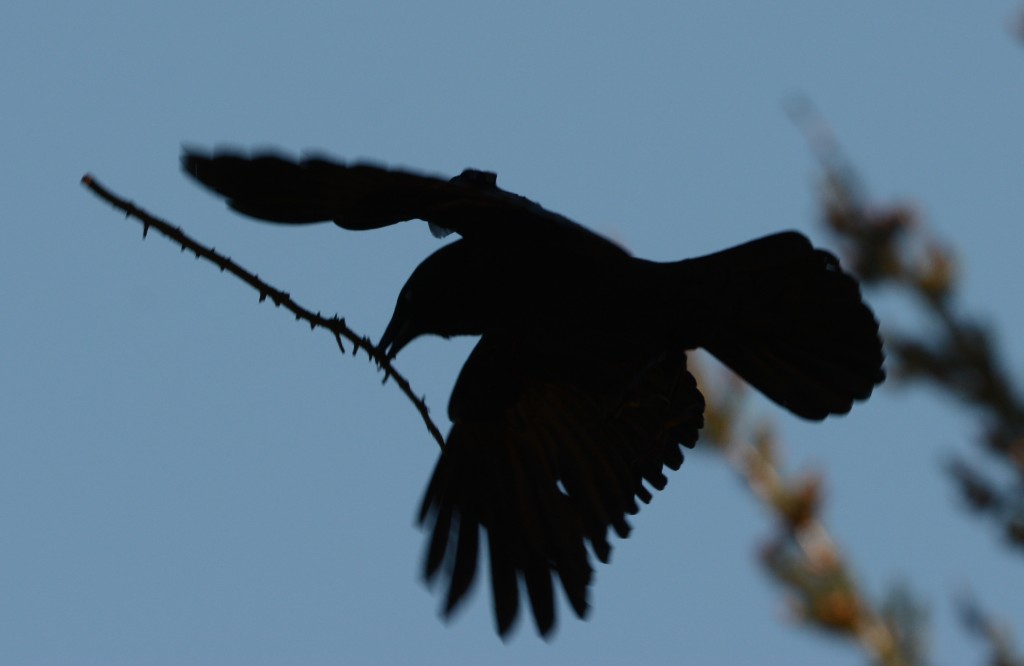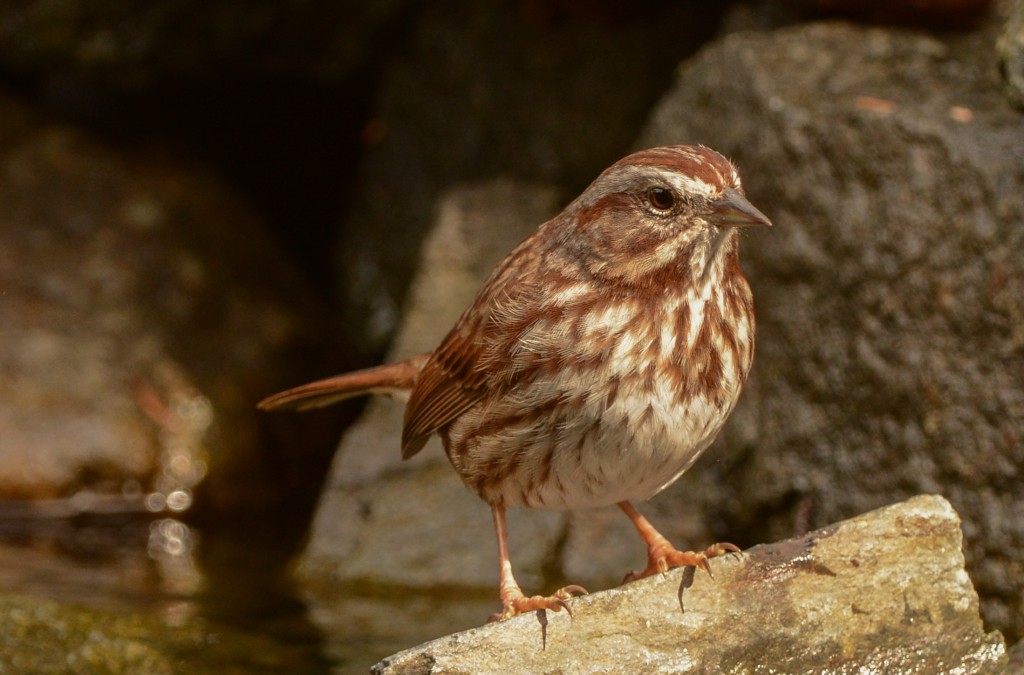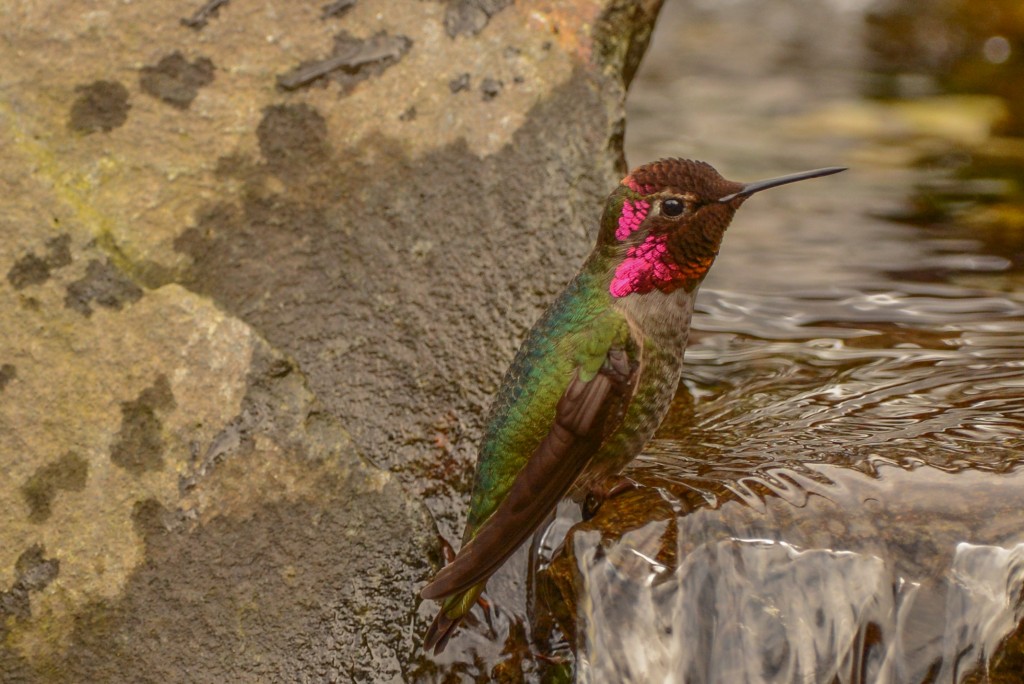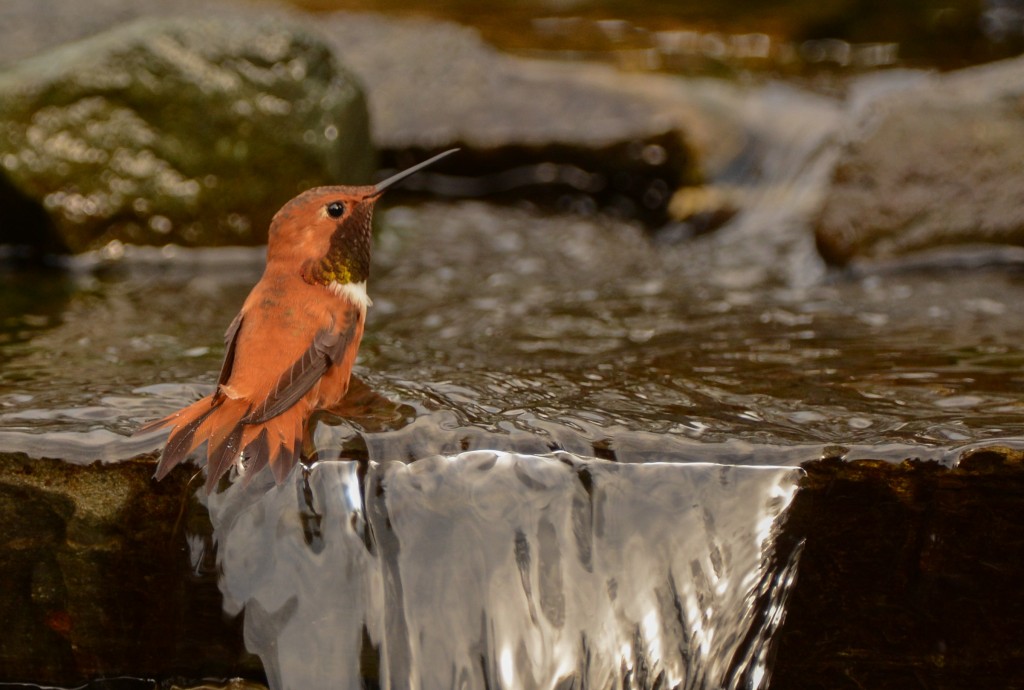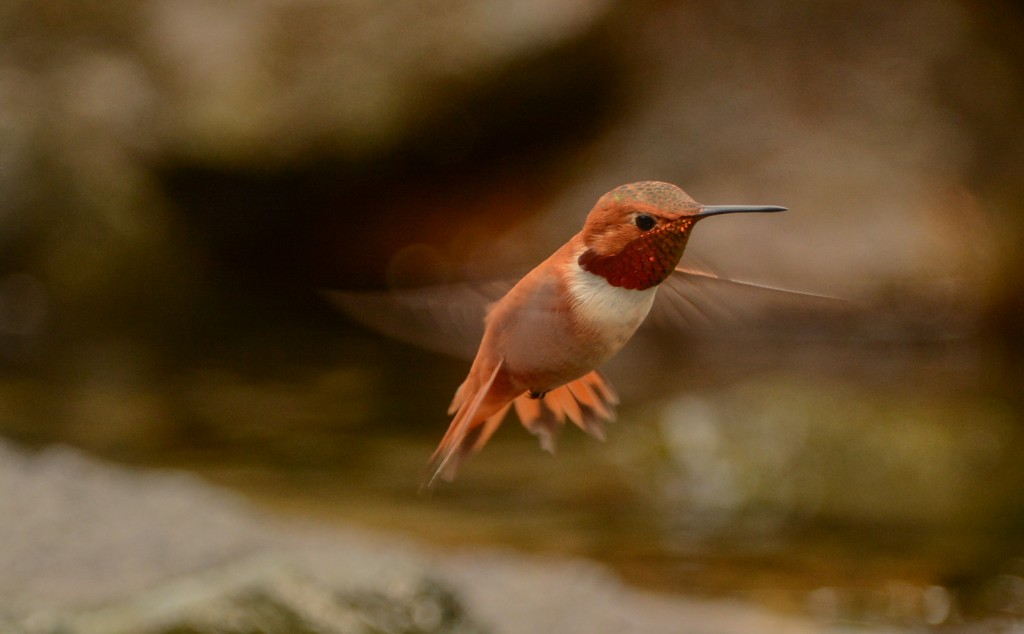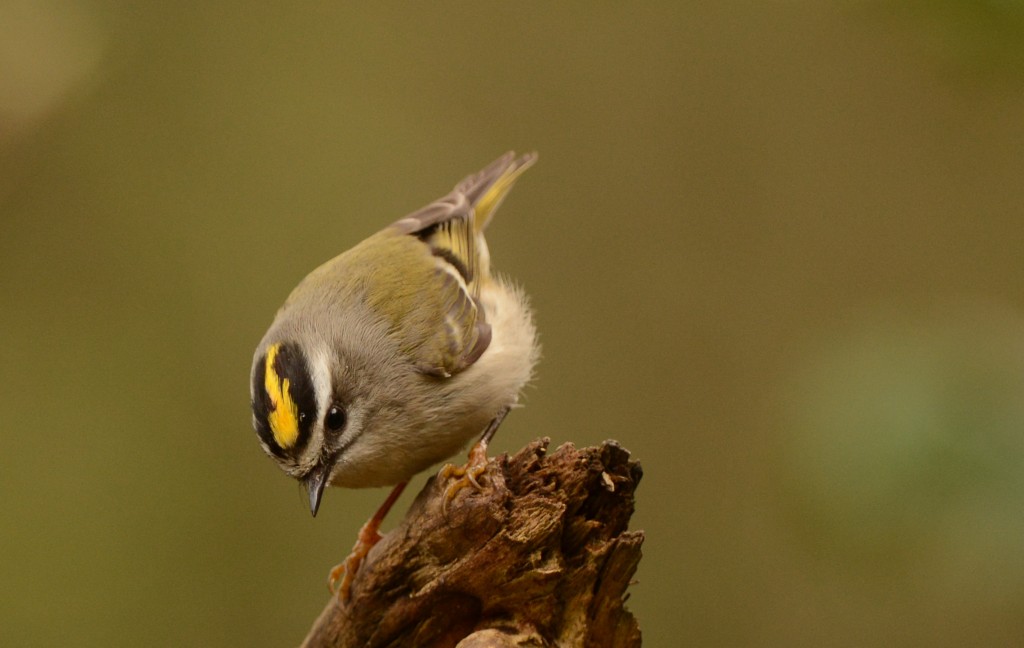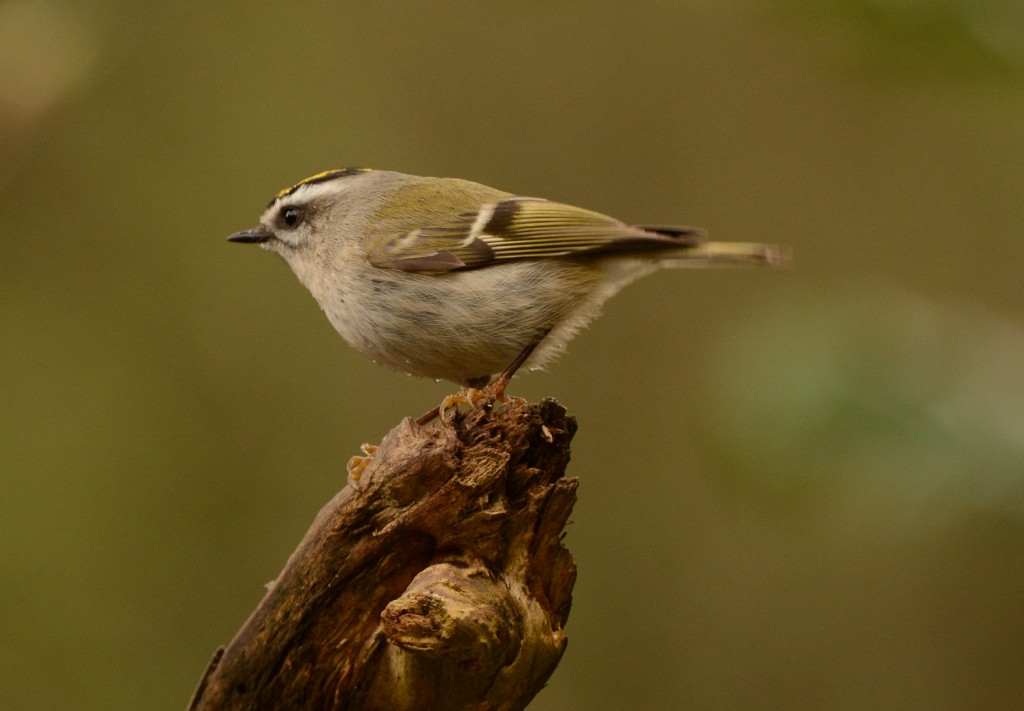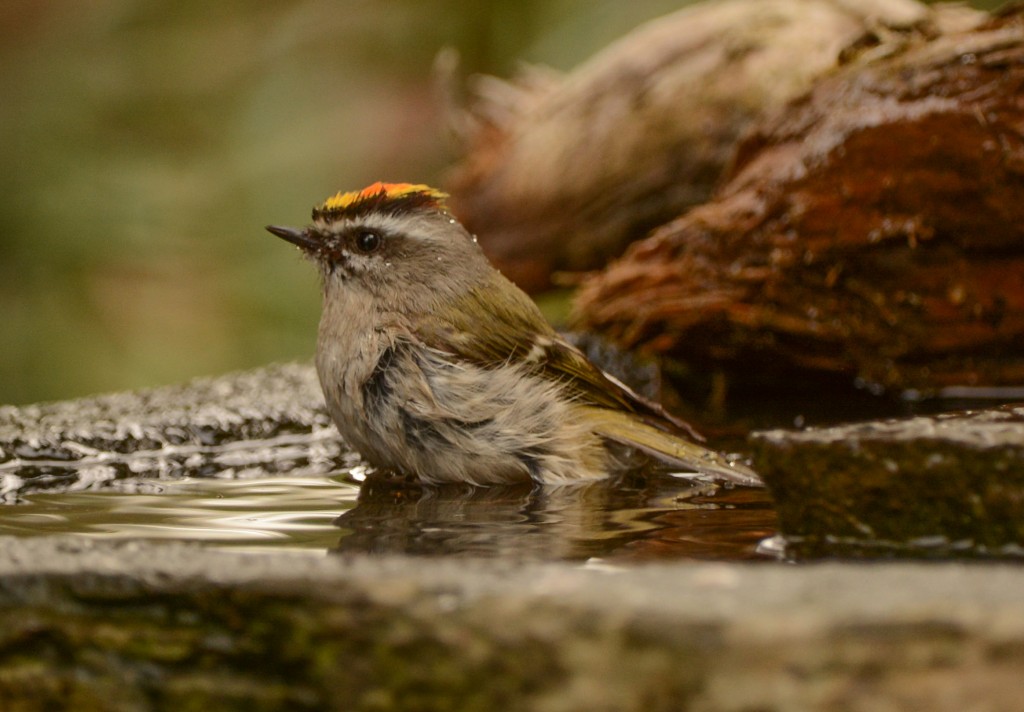Since I take so many of my photos from the yard I thought I would provide a little overview of the area.
To the south of us (on past the area shown in the photo below) is undeveloped city parkland which stretches away from us to the top of Cap Sante. We can assume that the forest serves as the main repository for most of the birds that enter the yard.
This is a view looking south over our front ‘yard’. The rockery in the middle of the photo features our watercourse but the water flows in the other direction so you can’t see any water in this photo. The usual spot from which I photograph birds is just behind the rhododendron on the right side of the photo… in front of what appears to be a ladder. This allows me to have the sun behind my back for photography. The other primary feature in the yard is an artificial brush pile located behind the hummingbird feeder on the left side of the photograph.
Moving around to the south side of the watercourse, and looking NNE, you can see the watercourse with the small pool at the bottom. The brush pile is behind the hummingbird feeder in the right upper corner of the photograph. The brush pile is the main bird repository for the yard and it has a small static bird bath on this side of it. From my usual photo position in the yard I can view five water features.
This is a closeup of the cascade in the watercourse. Note the “staging sticks” located around the watercourse. They offer me an additional opportunity to photograph the birds in a natural setting. To keep my photos from all looking alike, I have to change out the sticks every few weeks. I keep an inventory of sticks for that purpose and have one or two subscribers who remind me if too many photos of the same stick(s) appear in my photos. Some of the sticks have already been reoriented since these photos were taken.
I have several different kinds of feeders hung in the yard to attract birds, but most of what I consider the really interesting birds can’t be attracted by food that we offer. This generally includes warblers, vireos, wrens, tanagers and several other species. However ALL birds are attracted by water… and the presence of other birds.
An exception is sunflower seeds in the shell which seem to be preferred by Black-headed grosbeaks which have yet to arrive in my yard for the season. Any food that falls to the ground is almost immediately consumed by ground-feeding birds such as sparrows, juncos, pine siskins and towhees. In the eight years we’ve lived in our house I’ve only seen one rat, and while it was in our yard for a couple of days it wasn’t my yard that attracted it to the area.

